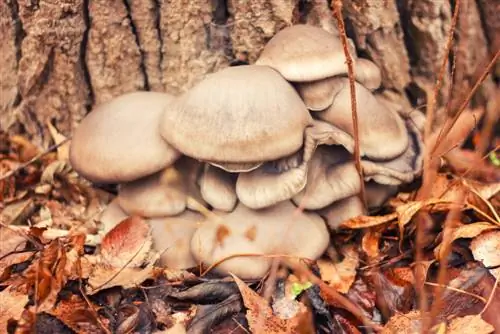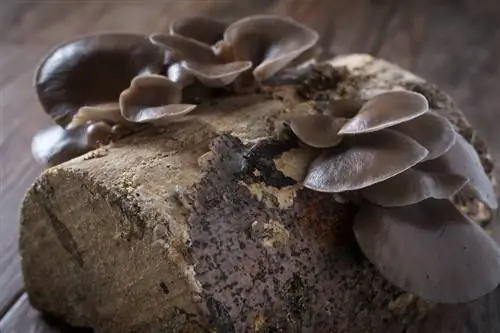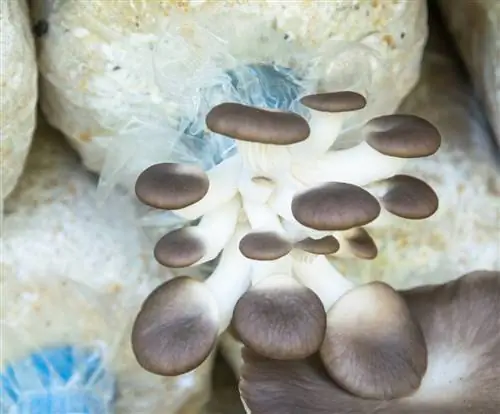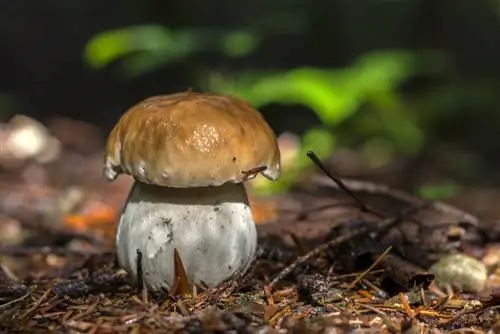- Author admin [email protected].
- Public 2023-12-16 16:46.
- Last modified 2025-01-23 11:21.
The oyster mushroom or oyster mushroom (Pleurotus ostreatus) is one of the winter mushrooms. Frost doesn't harm it at all, on the contrary, it only thrives at temperatures of less than 11 °C. When looking for the veal mushroom, as the oyster mushroom is also called, you should look up. It often grows very high up on tree trunks.

When and where can you collect oyster mushrooms?
Oyster mushrooms can be collected from December to March and in cool, wet summers. Look for thick, lying or standing hardwood deadwood, especially beech trees. The mushrooms prefer temperatures below 11°C and can even be found in snow.
Appearance of the oyster mushroom
The color of the oyster mushroom can be very variable, from ocher to slate gray to brown, everything is possible. The hats are also shell-shaped and arranged one above the other like roof tiles.
Hat
However, the side-stalked hat is only shell-shaped and rather small in young oyster mushrooms; older specimens develop oval to funnel-shaped hats that are up to 15 centimeters in size. The hat is also curved inwards at the edge. Typically, oyster mushrooms that grow in cool summers are more beige, but in fall and winter they turn darker from slate gray to brown. They never stand alone, but rather on top of each other.
Slats
The wide, distant lamellae of young mushrooms are whitish to cream-colored and only turn yellow with age. They always run far down the stem.
Stem
The white to brownish stem usually sits on the side of the hat and is usually very short or even only hinted at.
Meat
The flesh of young oyster mushrooms is whitish and soft, with age the mushrooms become tough, especially in the stem.
Likelihood of confusion
The slightly poisonous mussel oyster mushroom is much smaller and has lamellae that end abruptly at the yellow velvety stem.
When and where to look
When stalking oyster mushrooms, you have to take a close look at thick, lying or standing dead wood from deciduous trees - especially beech trees. You can even find what you're looking for when it's snowing in the cold season, because oyster mushrooms only form fruiting bodies at temperatures of 11 degrees Celsius or less. This makes them perfect for a Christmas menu made from mushrooms you have collected yourself. They are mainly collected between December and March, although oyster mushrooms can sometimes also be found in cool, wet summers.
Tip
The oyster mushroom is one of the edible mushrooms that can be cultivated very well in the garden or even on the balcony or even in the cellar. It is able to use various substrates such as straw, paper, coffee grounds or wood.






